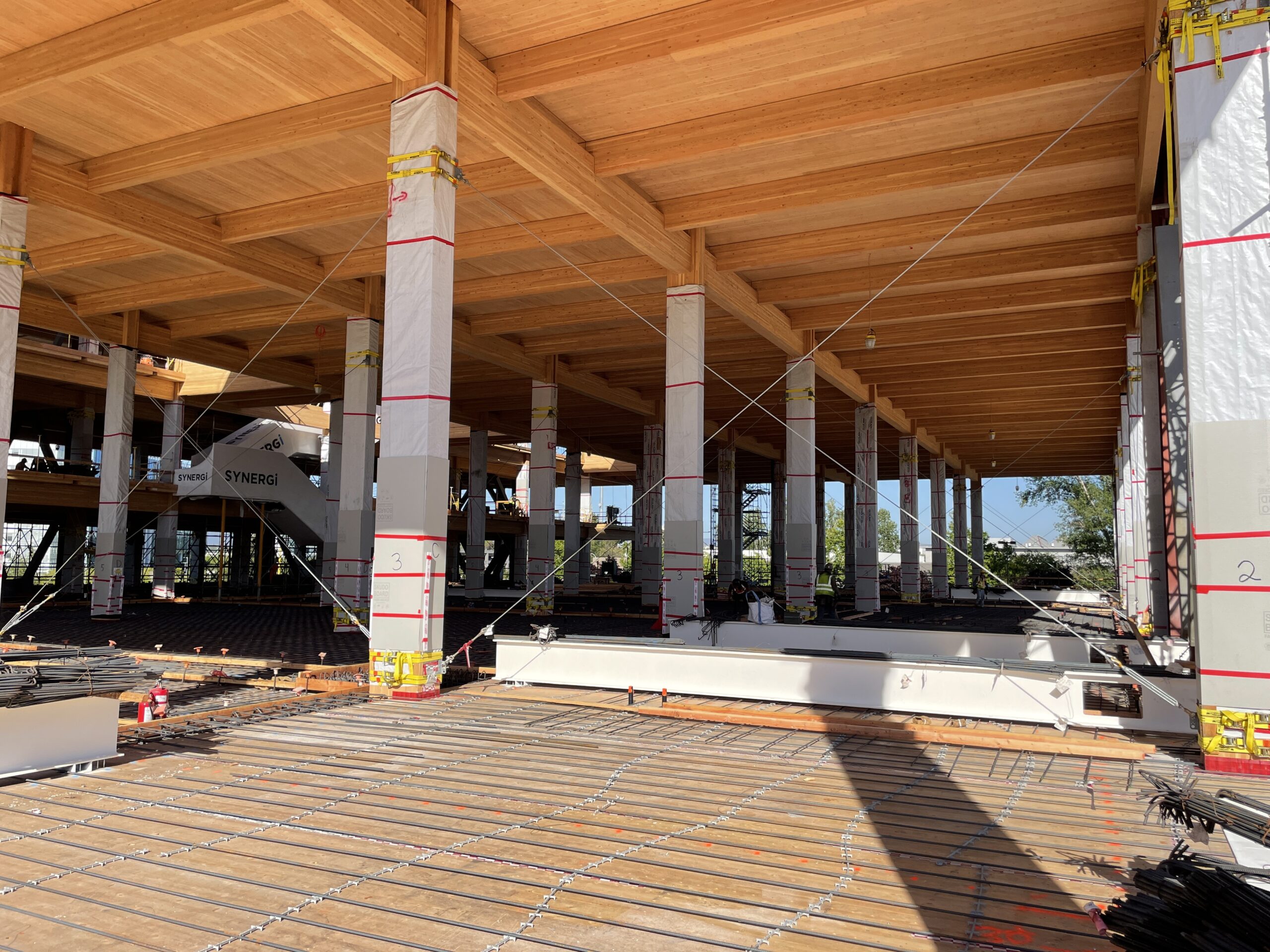Mass Timber
While cutting down trees may seem counterintuitive to nature’s preservation, Natural Resources Canada asserts that ‘mass timber buildings are sustainable, safe and healthy.’ Read on to learn about the benefits of using mass timber for construction.
What is mass timber?
Mass timber is a general term for large format wood panels used for floors, roofs, and walls. The most specific mass timber product is CLT, commonly referred to when talking about mass timber.
The process of building structures using mass timber is called mass timber construction. Unlike the typical wooden frames, à la Little House on the Prairie, that come to mind when thinking of wooden structures, mass timber solutions can be used to build mid and high-rise structures.
Benefits of mass timber construction
Structural strength:
Mass timber is solid. The inherent flexibility of wood and structural designs using dowels etc., also means that mass timber buildings can resist high winds and earthquakes.

Sustainability:
Mass timber has a lower carbon footprint than traditional construction materials like concrete and steel.
Renewable:
Wood is a renewable resource. The wood used in mass timber construction is obtained using modern forestry practices that involve planting, growing, harvesting, and replanting trees. Typically, two saplings are planted for every tree that is cut.
Carbon Sinks:
A 2014 study found that using wood substitutes in place of steel and concrete as construction materials could save 14 to 31% of global CO2 emissions and 12 to 19% of global fossil fuel consumption. Additionally, the carbon trapped in the wood while growing remains sequestered in it even after turning it into lumber. Natural Resources Canada states that if mass timber construction is maximized, it could remove approximately 0.6 million tonnes of CO2 from the atmosphere annually by 2030, equal to taking 125 000 cars off the road.
Mass timber is also lighter in weight than steel and concrete, reducing the size of foundations required and the amount of fuel needed to transport materials.
Fire safety:
Cost saving:
Mass timber is generally more expensive than Steel or Concrete construction, depending on which region you work in, but as it continues to increase in popularity, it is becoming more competitive.
As mass timber is a manufactured product, a lot of construction work can be prefabricated and fitted on site. This means that it takes less time to complete than traditional construction work. This also means fewer disturbances to your neighbourhood.
Mass timber construction offers plenty of benefits. It is vital that you have a team of experts on board to maximize your gains. F3 Timber Technologies has over 15 years of experience creating and assisting with the connection design of mass timber systems. Get in touch with us to learn how we can help you drive your project to success.

CALL US
Let’s work together
Let’s work together
